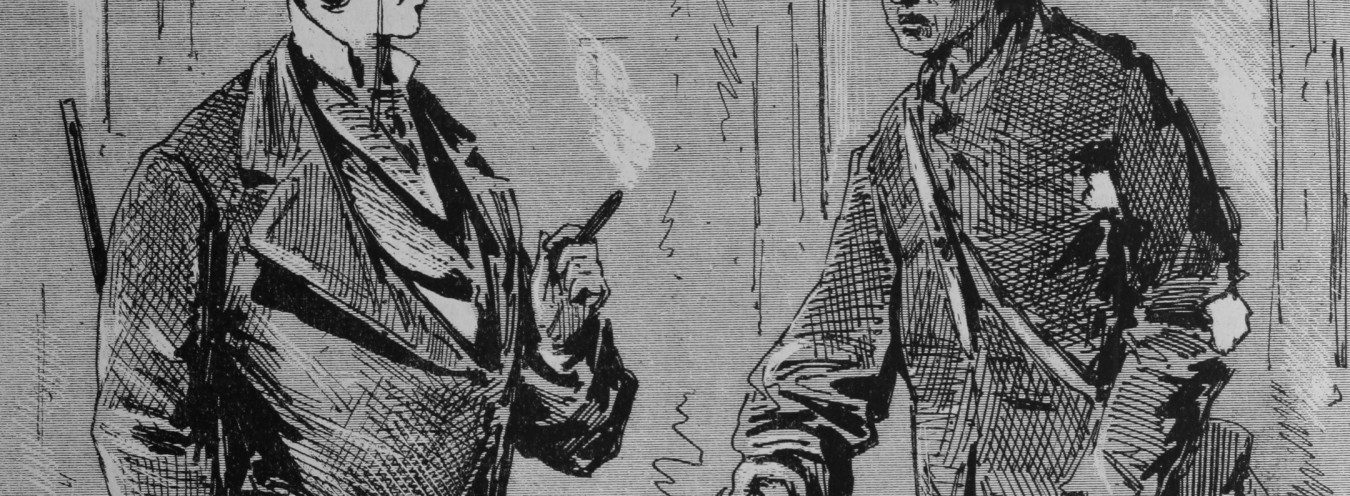
Money
Money [said Doctor Szuman] is the larder of the noblest force in nature – human labour. It’s the ‘open sesame’ at which all doors fly open, it’s the table-cloth on which one can always find a dinner, it’s the Aladdin’s lamp, by rubbing which everything one wants is to be had. (539)
Everybody in The Doll mentions money at some point. From the richest to the poorest – everybody counts, gains, loses, inherits, buys, sells, goes into debt, or pays interest. Everything has a calculable value in the novel. Even when blinded by love, Wokulski, during his first dinner with the Łęckis, looks at Izabela and goes through the following calculation: That dress – fifteen yards of silk at a rouble: fifteen roubles…Lace at ten roubles, and work fifteen or so…Forty roubles altogether for the dress, about a hundred and fifty for the necklace, and the rose – ten groszy.
This should not be surprising – he is a merchant after all. But is it possible that his wealth would become so immense in such a short time? After his return from Siberia, fearing starvation, he marries a widow whose husband was a store owner. After her death, he inherits 30,000 roubles. Once he falls in love with Izabela, he decides to multiply his riches and leaves for the war in Turkey, where, as he says, [i]n six months I’ve made ten times the money that two generations of Mincels made in a half-century. Wokulski’s wealth is a result of his talent, but it is also due to unbelievable good fortune: Like a gambler who backs the same number ten times running at roulette. During the next year and a half, his fortune doubles. He can afford grand gestures: he donates a stack of half-imperials during the Easter charity collection, buys a racing horse, and travels across Warsaw in his own carriage. The opening of a new store is an occasion to host a party in the Europejski hotel. All this makes him grow in Izabela’s eyes – at the beginning of the novel she does not understand percentages, but within a year her algebra is advanced enough to calculate large sums in her memory. Wokulski’s generosity may be overwhelming, but Prus’s own precision in recording the prices is a credible testimony to the novel’s time and age.
In Warsaw at that time, the legal tender took the form of coins of double currency: 1.5 rouble = 10 złoty, 0.75 rouble = 5 złoty, 30 kopeks = 2 złoty, and 15 kopeks = 1 złoty. The average annual salary of a Polish white-collar worker was 2,400–4,000 roubles. The university professors’ salaries ranged between 2,000 and 3,500 roubles, and those of middle-school teachers rarely reached 1,500 roubles. The employees of the Warsaw-Vienna Railway earned between 500 and 1,000 roubles annually. Doctors and lawyers earned slightly more than that, whereas the highest earners were to be found among engineers, entrepreneurs, and owners of offices. Male actors were paid between 500 and 5,000 roubles per year (opera conductors could demand the highest salaries), female actors – between 400 and 1,900 roubles. Helena Modrzejewska was an exception here – she received circa 7,000 roubles as her annual income from the Teatr Wielki (Grand Theatre). For blue-collar workers, the average yearly salary was 600 roubles.
Those were the incomes, how about the expenses? Let us start with the basics: 1 lb of bread cost about 4 kopeks, 1 pood (~40 lb) of flour – 179 kopeks, one korzec (~120 l) of potatoes – about 4 roubles, 1 pound of meat – about 15 kopeks, 1 pood (~40 lb) of coal – 17 roubles, 4 l (1 garniec) of milk – about 32 kopeks.
The other items in the domestic budget included rent, clothing, furniture, and appliances, entertainment (the most expensive theatre tickets, in the ground and first floor stalls, cost about 8 roubles – the cheap seats were a few dozen kopeks).
The above statistics show an immense discrepancy in earnings. The most fortunate among the bourgeois (bankers, merchants) and the aristocracy, could afford to spend what they wished; millions lived in poverty. Few people stood a chance of getting out of their social class. The most desirable scenario leading to the improvement of one’s material situation was marrying one’s way into money.
Bibliografia
- J. Żurawicka, Inteligencja Warszawy na przełomie XIX i XX wieku, w: Warszawa XIX wieku: 1795-1918, red. R. Kołodziejczyk, J. Kosim, J. Leskiewiczowa, Warszawa 1974, z. 3.



